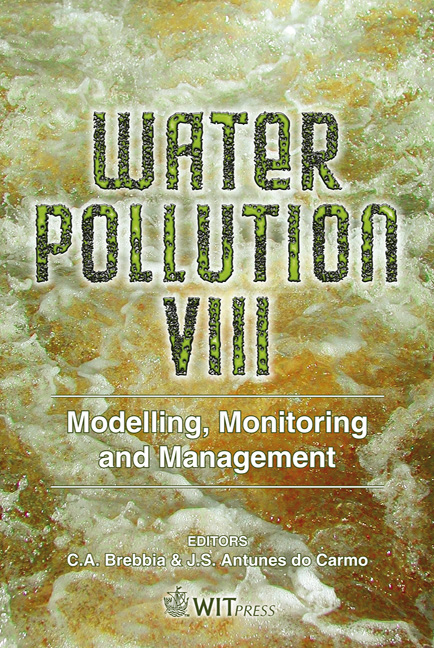Dynamics Of Lagoon Ecosystems
Price
Free (open access)
Transaction
Volume
95
Pages
11
Published
2006
Size
701 kb
Paper DOI
10.2495/WP060011
Copyright
WIT Press
Author(s)
F. Cioffi & G. Cannata
Abstract
The dynamic behaviour of a lagoon ecosystem is investigated by using an eutrophication model. The phosphorous external load is assumed as control parameter. The response diagram, obtained by simulation, varying the value of control parameter, shows the existence of different ranges of stability of the ecosystem, characterized by the dominance of a specific group of primary produces and by a different ecosystem vulnerability to Summer water anoxia. A catastrophic bifurcation occurs for a critical value of the control parameter, which manifests as an abrupt change of the dominant specie from eelgrass to macroalgae. The serious consequences of such a selection in terms of eutrophication processes, anoxic crisis vulnerability and management policies for ecosystems subject to alternate states are emphasised. Keywords: lagoon, mathematical models, eutrophication. 1 Introduction Lagoon ecosystems exhibit a complex dynamic which is due to non linear interactions of biological, chemical and hydrodynamic processes that influence the cycles of carbon (vegetal growth, organic detritus production and mineralization), nutrients, sulphur, and of all those species playing any role in ecological phenomena [1, 5, 7, 8]. Such a dynamic is influenced by various external forcing variables – tidal flow rate, wind speed, temperature, light intensity, nutrient external load – that in most of the cases are periodical or multi-periodical. Anthropogenic or natural changes in one or more of these external variables, can trigger shifts between ecosystem states which can be evidenced by species composition shift, higher vulnerability of the lagoon to Summer water anoxia, more frequent fish kills. These regime shifts can be
Keywords
lagoon, mathematical models, eutrophication.





